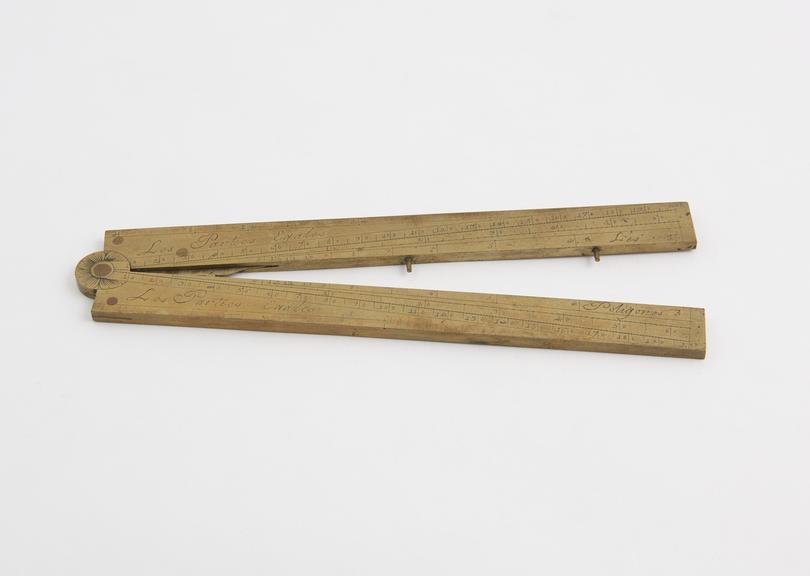


12-inch brass sector, made by Michael Butterfield, Paris, 1680-1724. Signed “Butterfield A Paris”.
The hinge is decorated with a foliate rose.
This sector is 12 inches in length (one French foot called “Pied de Roi”). It is engraved of 8 scales, 4 on each side, but 2 are unfinished. On the signature side: “Les Cordes” (0 to 180); “Les Solides” (1 to 64); “Les Metaux” (gold, lead, silver, copper, iron and tin using alchemical symbols) and one unfinished (4 to 24, probably for cannonballs or cannons). On the other side: “Les Parties Egales” (0 to 200); one scale graduated from 1 to 64 (in fact “Les Plans” but not engraved here); “Les Poligones” (3 to 12) and one unfinished (4 to 24, probably for cannonballs or cannons).
A sector is mainly used to calculate proportions between two entities or equivalences. It can also be used to draw polygons and various figures, to calculate square and cubic roots, measure angles, enlarge or reduce a scheme or a map, evaluate weights of compounds made of different metals, size of cannonballs. A sector is always used with a dividers.
Details
- Category:
- Mathematics
- Collection:
- Sir Henry Wellcome's Museum Collection
- Object Number:
- 1980-1135
- Materials:
- brass
- Measurements:
-
overall - closed: 4 x 175 x 33 mm
- type:
- proportion drawing instruments and sectors
- credit:
- On loan from the Wellcome Trust




